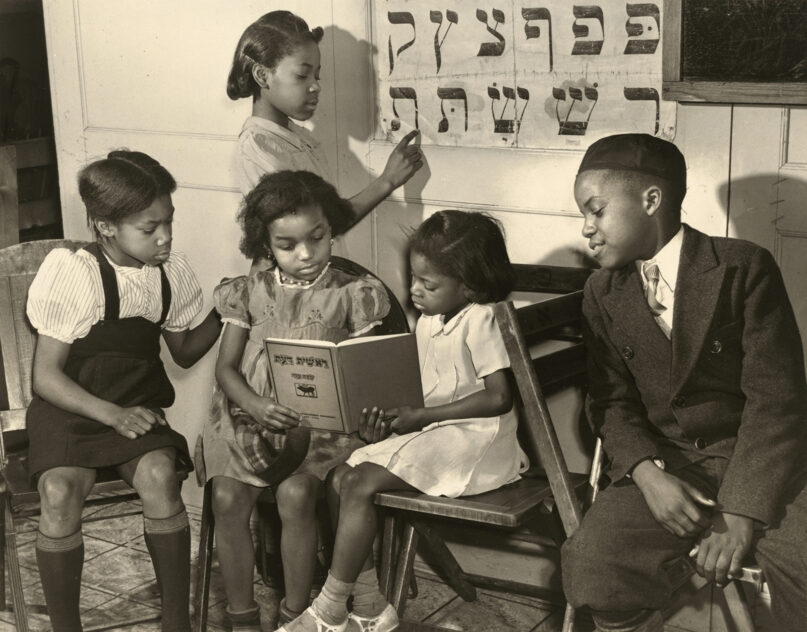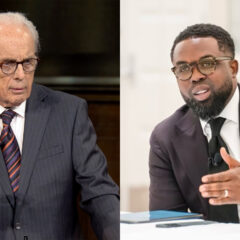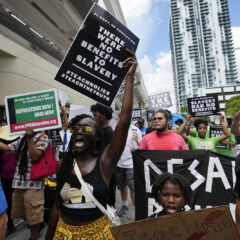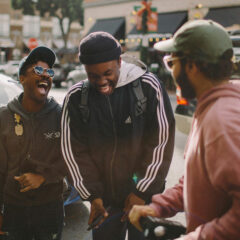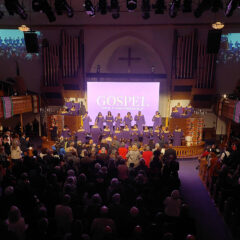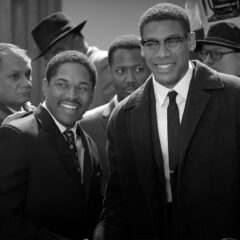(RNS) — A newly published collection of photos highlights the range of religious practices of African Americans — inside and outside traditional sanctuaries.
“Movements, Motions, Moments: Photographs of Religion and Spirituality from the National Museum of African American History and Culture” is a compact volume spanning the 19th through the 21st centuries and featuring grassroots people expressing their spirituality.
The book, part of the Double Exposure series of the Smithsonian museum that opened in 2016, is to be released Tuesday (Jan. 10).
The captions and other writings that surround its more than 65 photos explain how the rituals and remembrances captured in the book reflect Black history through its diversity of spiritual traditions, from salat, the five-times-a-day Muslim prayer, to the observance of Rosh Hashana, the Jewish new year.
For example, the 1981 image of a baptism amid the rolling waves of Lake Michigan echoes the practices in creeks and waterways that were used in the Deep South before many African Americans headed north during the Great Migration earlier in that century. A 1919 photo of women and men outside Vernon African Methodist Episcopal Church was taken two years before the church was burned in the Tulsa racial massacre — and eventually rebuilt atop the surviving basement.
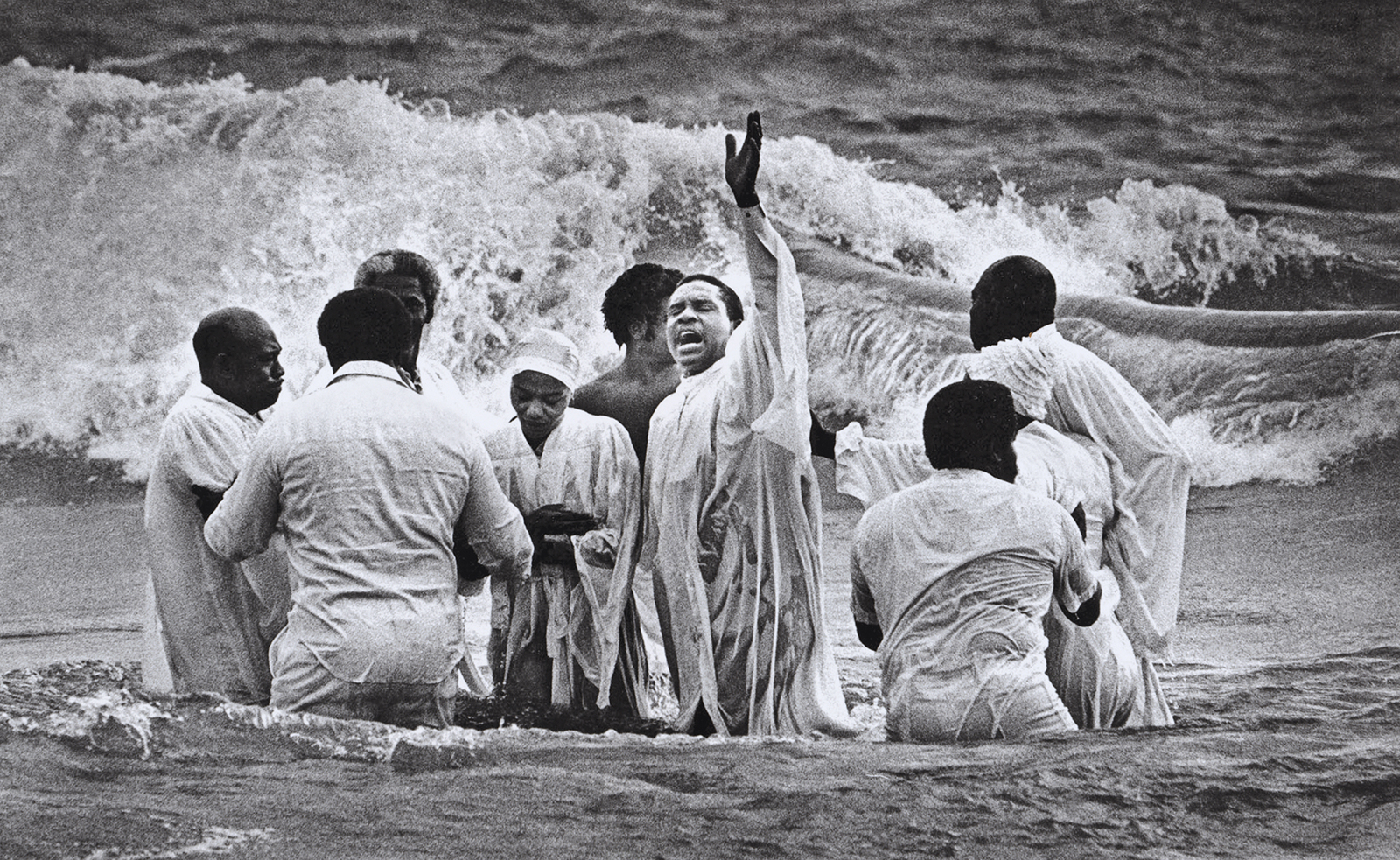
Photographer John H. White, the son of an African Methodist Episcopal minister and child of the Black church tradition, captures with great reverence, precision and devotion a highly intimate moment in the spiritual life of the Church of God of Harvey, Illinois, during a baptismal service on Lake Michigan. In the early 20th century, Lake Michigan’s beaches, particularly those near major urban areas, remained racially segregated. In the wake of the Great Migration, many African Americans from the South relocated to cities along the coast of the lake, including Chicago, Milwaukee, Gary and Muskegon. Having abandoned the waterways and creeks of the rural South, these migrants frequently utilized the shores of Lake Michigan to conduct public baptisms. (Collection of the Smithsonian National Museum of African American History and Culture, Gift of John H. White/Pulitzer Prize-winning photojournalist, © John H. White)
The book features well-known figures such as Dallas’ T.D. Jakes and New York’s Father Divine as well as trailblazing female religious leaders. Myokei Caine-Barrett is shown preparing for ordination as bishop of the Nichiren Shu Order of North America in 2014, when she also became the first person of African American and Japanese descent to head that Japanese Buddhist organization.
RELATED: Black museum religion exhibit features Little Richard’s Bible, Rev. Ike’s suit
In contrast to the long and persistent history of lynching photos — that were sometimes distributed as postcards — the volume includes the integration of dignity at the time of death. One lesser-known photo depicts an honor guard of women beside the casket of Harriet Tubman in 1913 and another captures mourners in line in 1965 to view Malcolm X’s coffin, where his body was encased in a traditional white linen shroud.
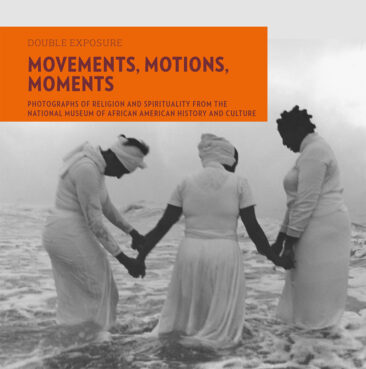
“Movement, Motions, Moments: Photographs of Religion and Spirituality from the National Museum of African American History and Culture” Courtesy image
The book also demonstrates — in facing pages — the changing look of religion-related protests. A photo of young activist John Lewis kneeling in prayer with other civil rights workers in 1962, a year after he was ordained a Baptist minister, is featured across the fold from public theologian Rahiel Tesfamariam pictured in St. Louis, a year after Michael Brown’s death, wearing a T-shirt that reads “This Ain’t Yo Mama’s Civil Rights Movement” in 2015.
The book’s photos are both historic and up to date, featuring then-Archbishop (and now Cardinal) Wilton D. Gregory wearing a “Love Thy Neighbor” mask at the 2020 “Red Mass” in the first year of the COVID-19 pandemic and the Rev. Courtney Clayton Jenkins preaching a virtual sermon to almost empty chairs — save the images of her congregants taped to the seats —at Cleveland’s South Euclid United Church of Christ that same year.
“It is our hope that after viewing these images, Black religious expressions long obscured will be more accessible, and no longer rendered invisible, nameless, or inaudible,” wrote Eric Lewis Williams, the museum’s curator of religion, in an essay that accompanies the photos.
Here is a slideshow of a sampling of the book’s photos:
Founded by Igbo Queer teacher and healer Adaku Utah, Harriet’s Apothecary challenges the very essence of Black bodies in motion, while shedding light on the various ways spaces can be curated for all identities and bodily abilities. Pictured here are participants in one of the organization’s healing villages, this one located at the Soul Fire Farm in Petersburg, New York. Participants form a circle to participate in an exercise in September 2017. As an annual event, healing villages allow for a discourse that centers both the individual and larger group to pull back layers of injustices. (Collection of the Smithsonian National Museum of African American History and Culture, Gift of Harriet's Apothecary and Soul Fire Farm, © Adaku Utah)
Marquetta L. Goodwine, or "Queen Quet" as she is known throughout the Gullah-Geechee Corridor, is widely regarded as chieftess and head of state of the Gullah/Geechee Nation. An artist, social commentator and cultural preservationist, Queen Quet rose to prominence in 1999 after testifying before the United Nations’ 55th Session of the Commission on Human Rights in Geneva. She is pictured here standing before one of the last three remaining praise houses on St. Helena Island, South Carolina, in 2014. (Collection of the Smithsonian National Museum of African American History and Culture, Gift of Pete Marovich, © Pete Marovich)
A few weeks after the “Red Mass” pictured here on Oct. 5, 2020, at the Cathedral of St. Matthew the Apostle in Washington, D.C., Pope Francis elevated the archbishop of Washington, Wilton Daniel Gregory, to cardinal, the first African American to hold that position. The Red Mass gets its name from the red vestments worn for the Mass of the Holy Spirit, offered annually to justices, judges, diplomats, attorneys and senior government officials in Washington on the first Sunday of October, the day before the start of the fall Supreme Court term. In addition to his traditional robes and miter, Archbishop Gregory wears a mask to protect himself and others from the global COVID-19 pandemic. (Collection of the Smithsonian National Museum of African American History and Culture, Gift of Carroll Media Co. and the Roman Catholic Archdiocese of Washington, D.C., © The Catholic Standard – The Roman Catholic Archdiocese of Washington, D.C.)
Pictured here on Palm Sunday 1898, the Sisters of the Holy Family disembark from a steamer boat in Stann Creek, Belize, to provide educational support to the children of the Garifuna community. Pictured on the far left is Mother Superior Mary Austin Jones, leader of the sisters from 1891 until her death in 1909. (Collection of the Smithsonian National Museum of African American History and Culture, Gift of the Sisters of the Holy Family, New Orleans)
Photographer Lola Flash writes of her syzygy, the vision series: “My soul is hopeful for a divine future where we are finally able to run anew, jumping in space from planet to planet...into a narrative of pure joy.” The 2020 self-portrait "Divinity" shows Flash wearing an orange prison uniform and a space helmet while standing inside a boat in a position of prayer—an image reminiscent of a religious statue framed inside a protective grotto. (Collection of the Smithsonian National Museum of African American History and Culture, Purchased through the American Women's History Initiative Acquisitions Pool, administered by the Smithsonian American Women's History Initiative, © Lola Flash)
In this 1990 image, photographer Chester Higgins captures a man performing salat, a ritual Muslim prayer that is completed five times a day. (Collection of the Smithsonian National Museum of African American History and Culture, © Chester Higgins, All Rights Reserved)
As COVID-19 mandates and safety concerns limited in-person religious services, Black religious moments, including funerals, worship services and celebrations, went virtual. At Cleveland’s South Euclid United Church of Christ, Pastor Courtney Clayton Jenkins preached to her congregation over Facebook with images of her congregants taped on chairs in 2020. Using videoconferencing, cellphones and social media platforms, Black religious leaders and institutions reconstituted themselves to meet the demands of the time. (Collection of the Smithsonian National Museum of African American History and Culture, Gift of the South Euclid United Church of Christ, © South Euclid United Church of Christ)
Youth usher Vivica Brooks passes out fans to congregants during an ordination service at Righteous Church of God in Washington, D.C., in 2003. (Collection of the Smithsonian National Museum of African American History and Culture, © Jason Miccolo Johnson)
On Oct. 28, 2014, in Boston, Myokei Caine-Barrett was elected bishop of the Nichiren Shu Order of North America, the first woman, first American and first person of African American and Japanese descent to hold that office. The bishop is pictured in her traditional garb at the time of her initiation conference on Oct. 25, 2014. Based in Houston, she serves as the resident priest at the Myoken-Ji Temple. Her ministry places particular emphasis on social issues, such as racism and mass incarceration. Through her work, she has played a significant role in reimagining women’s roles within a tradition dominated by men and has been at the forefront of bridging the gap between social and religious activism. (Collection of the Smithsonian National Museum of African American History and Culture, Gift of Jan Deputy-Louy, © Jan Deputy- Louy)
In the 1970s, the Cook County Jail in Chicago became a central spot for faith practitioners such as Mother Consuella York (likely pictured here), who became known as the "Jail Preacher" for her prison ministry. (Collection of the Smithsonian National Museum of African American History and Culture, Gift of John H. White/Pulitzer Prize-winning photojournalist, © John H. White)

RELATED: Photographer Captures `Soulfulness’ of Black Churches


